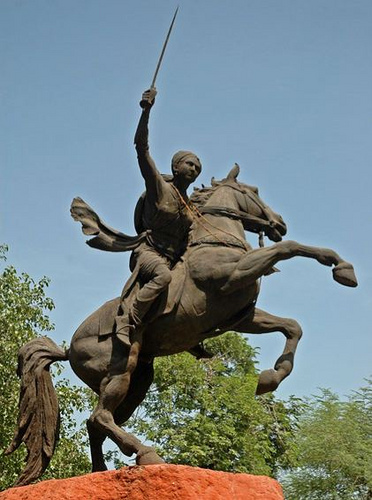Jhansi Travel Guide:

Introduction
Jhansi is a city of Uttar Pradesh state of northern India. Jhansi is a major road and rail junction, and is the administrative seat of Jhansi District and Jhansi Division. The original walled city grew up around its stone fort, which crowns a neighboring rock.
The National Highway Development Project, initiated by the government of Atal Behari Vajpayee, has sparked Jhansi's development. The North-South Corridor connecting Kashmir to Kanyakumari passes through Jhansi. The East-West corridor also goes through this city, so there has been a sudden rush to infrastructure and real estate development in the city. A greenfield airport is also on the Anvil
History
Rani Laxmi Bai, The Rani (Queen) of Jhansi (c.19 November 1835 – 17 June 1858) known as Jhansi Ki Rani, the queen of the Jhansi, was one of the leading figures of the First Freedom Struggle of India, and a symbol of resistance to British rule in India. She has gone down in Indian history as a legendary figure, the firebrand who began the Indian Revolution against British Colonialism and for Indian independence. The Muslim governors of the Mughal empire were constantly making incursions into the Bundela country. In 1732 Chhatrasal, the Bundela king, called in the aid of the Hindu Marathas. They came to his assistance, and were rewarded by the bequest of one-third of the Maharaja's dominions upon his death two years later. The Maratha general developed the city of Jhansi, and peopled it with inhabitants from Orchha state. In 1806 British protection was promised to the Maratha chief. In 1817, however, the Peshwa in Pune ceded all his rights over Bundelkhand to the British East India Company. In 1853 the Raja of Jhansi died childless, and his territory was annexed by the Governor-General of India. The Jhansi state and the Jalaun and Chanderi districts were then formed into a superintendency. Rani Lakshmibai, widow of the Raja, protested the annexation because she was not allowed to adopt an heir (as was customary), and because the slaughter of cattle was permitted in the Jhansi territory.
The Revolt of 1857 accordingly found Jhansi ripe for rebellion. In June a few men of the 12th Native Infantry seized the fort containing the treasure and magazine, and massacred the European officers of the garrison along with their wives and children. Rani Lakshmi Bai put herself at the head of the rebels and died in battle in Gwalior. It was not until November, 1858 that Jhansi was brought under British control. It had been given to the Maharaja of Gwalior, but came under British rule in 1886 as the result of a territorial swap.
Jhansi was added to the United Provinces, which became the state of Uttar Pradesh after India's Independence in 1947.
The fort standing in the hilly area shows that how the North Indian style of fort construction differentiated from that of the South. In South majority of the forts were built on the sea beds like the one at Bekal in Kerala.
Railways
Jhansi has its own Division of the North Central Railways. It is well connected by train services to all parts of the country, including 4 metros. There are direct trains to Mumbai, Delhi, Kolkata (Howrah), Chennai, Bangalore (Bengaluru), Trivandrum, Indore, Ahmedabad, Pune, Jammu, Lucknow, Bhopal and other major towns.In near future, jhansi is going to be one of the major stations in India. It is known for its excellent connectivity and forteous railway station .
Road Transport
The proposed North-south & East-west Corridors of the Golden-Quadrilateral Highway project pass and cross each other in Jhansi only and it is also well connected to Kanpur, Lucknow and Madhya Pradesh by road.The four lane national highway is at the last stage of its completion, giving a boom in infrastructure and other sectors in Jhansi and nearby areas. Moreover, the greenery near the broad and swift highway is very eye catching.